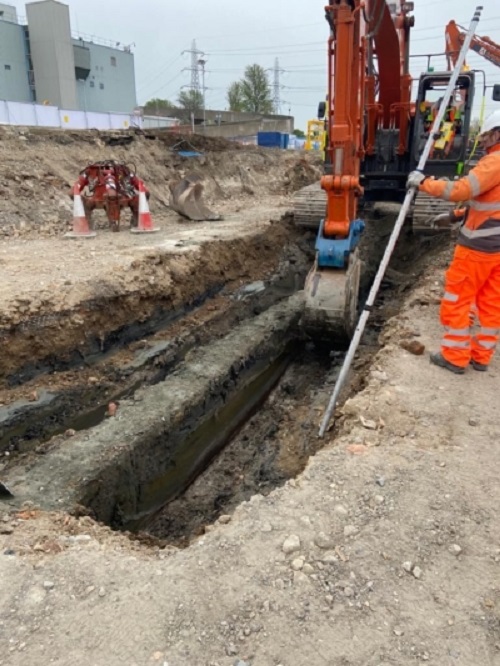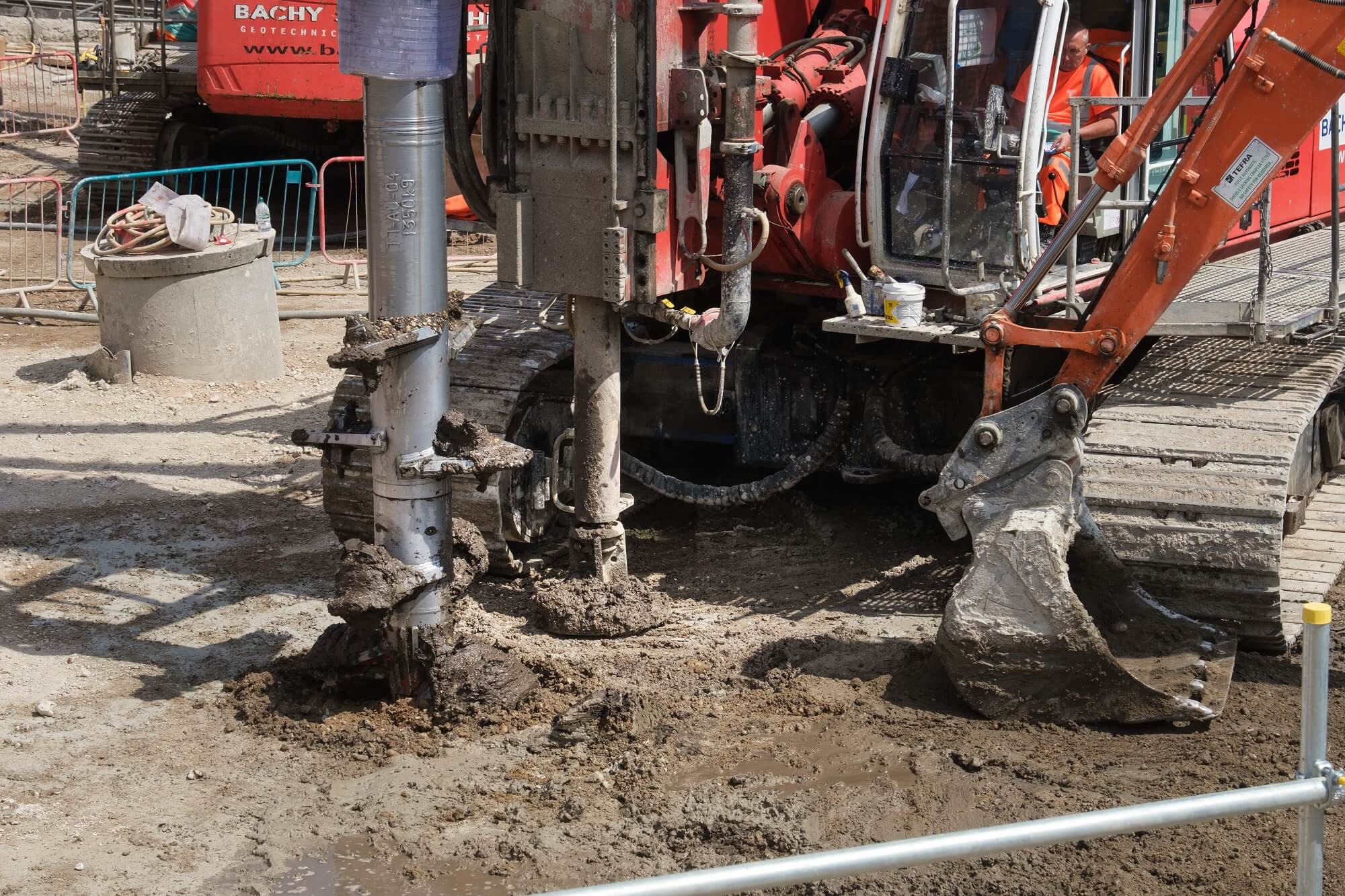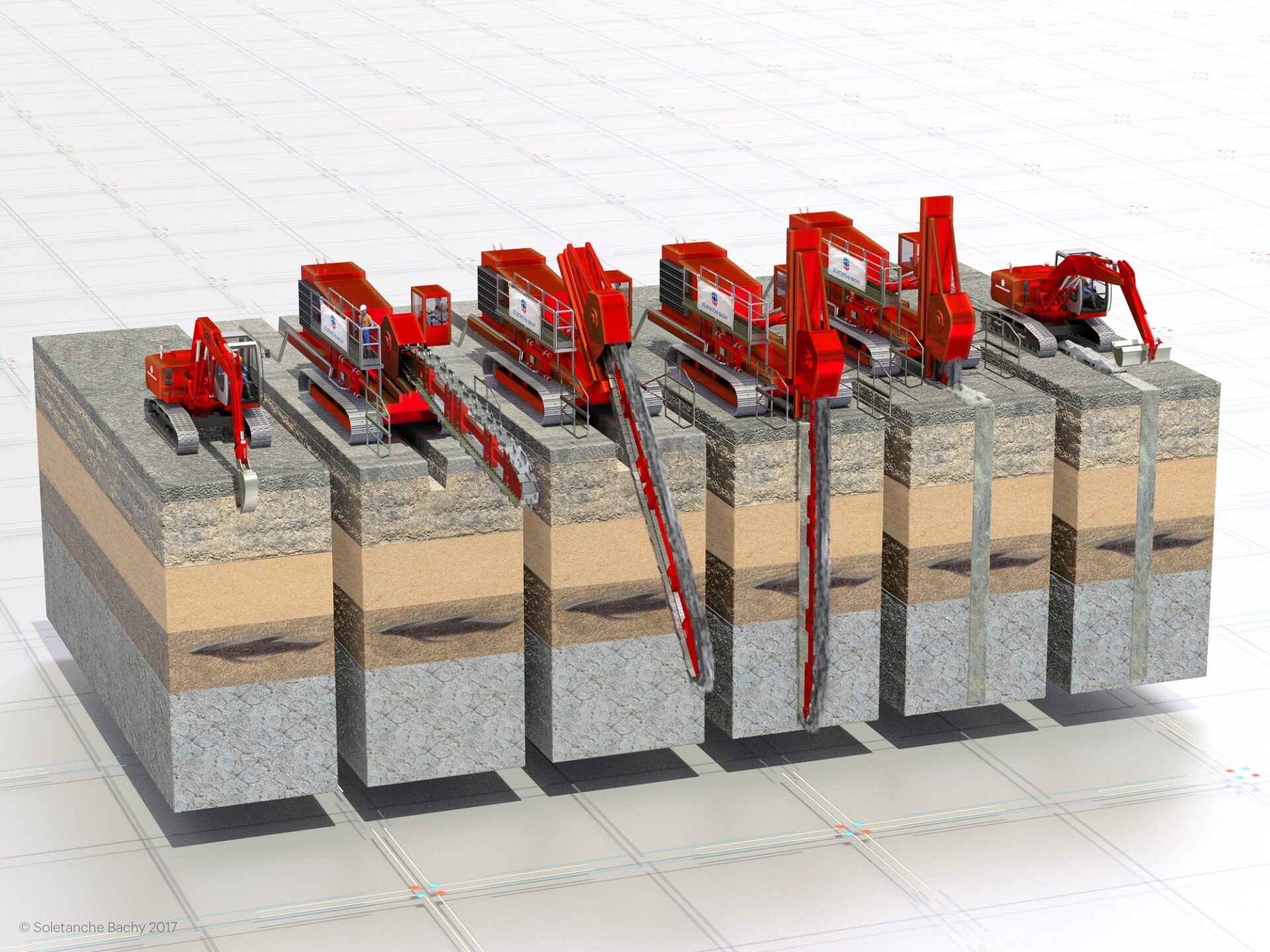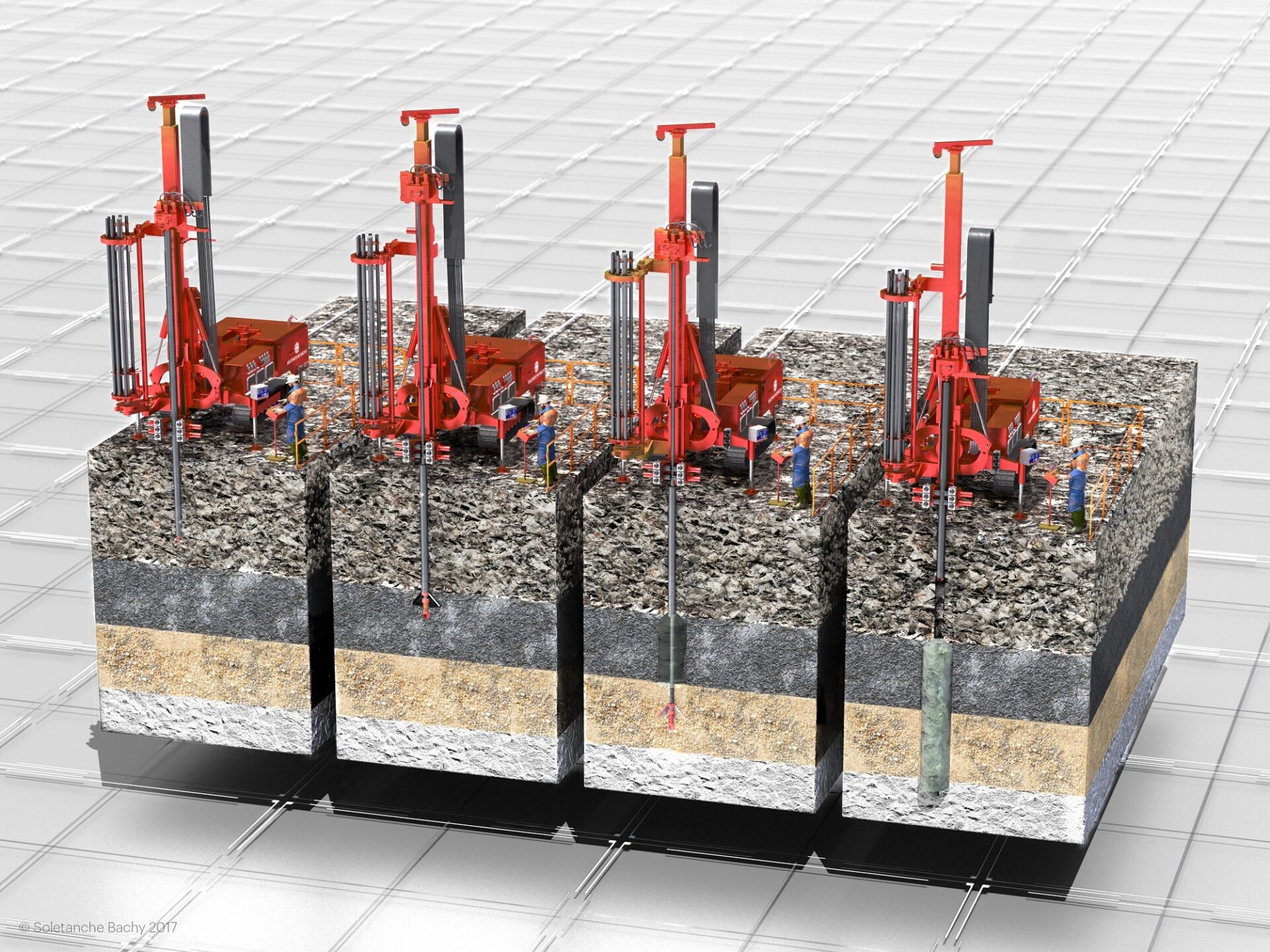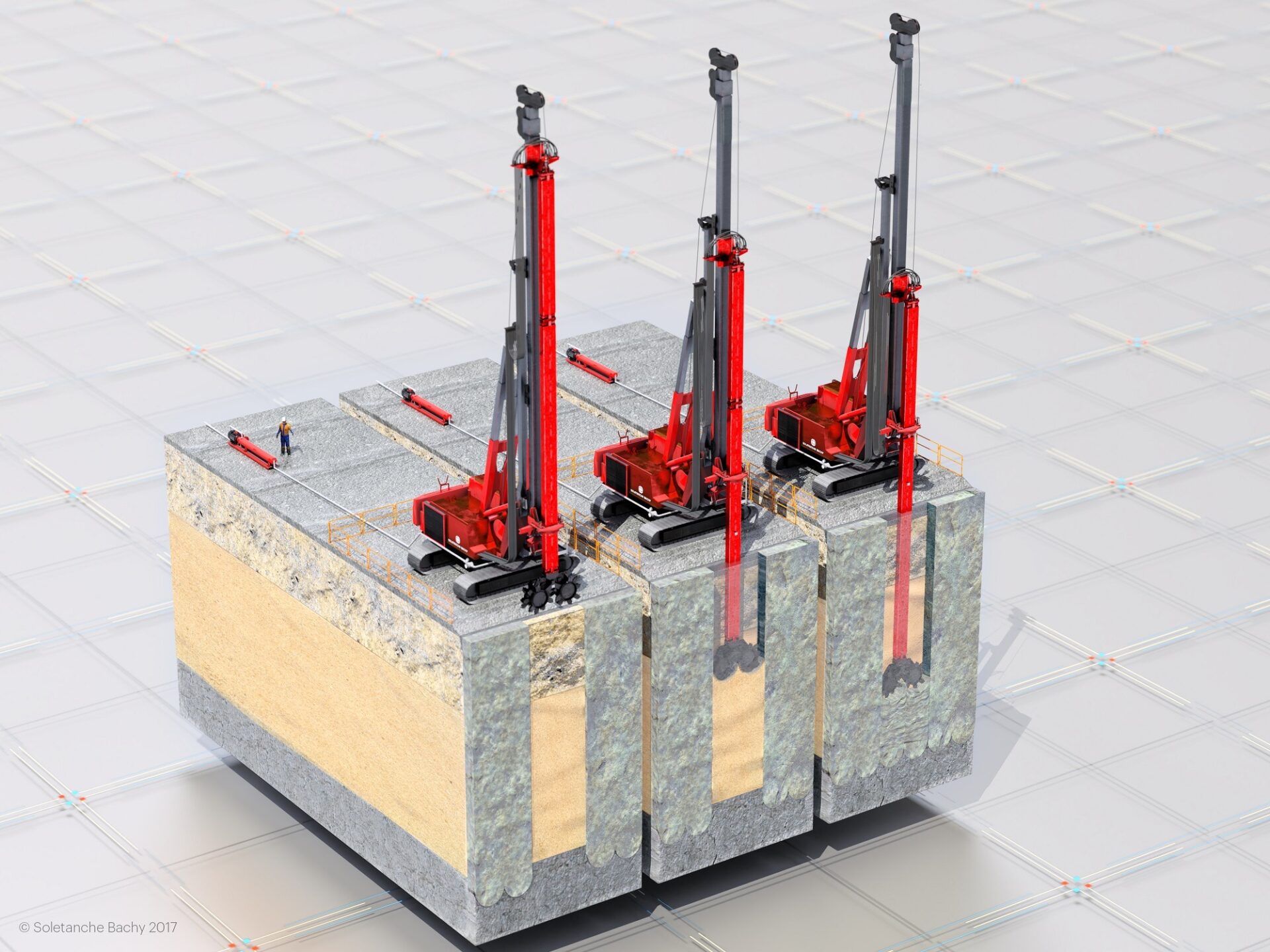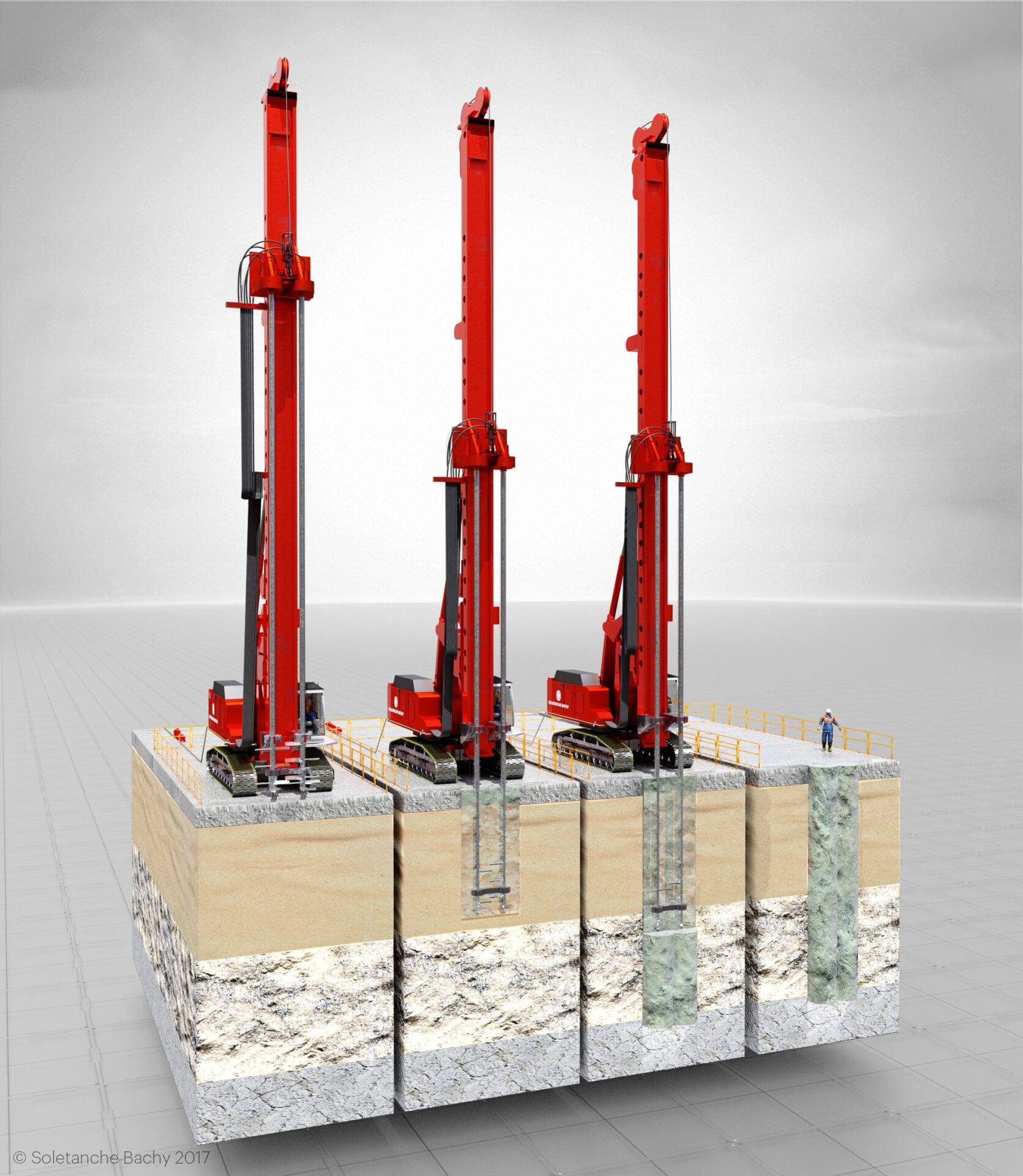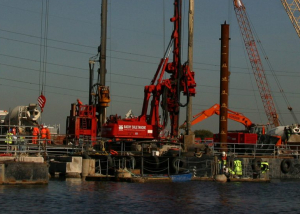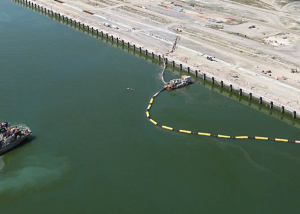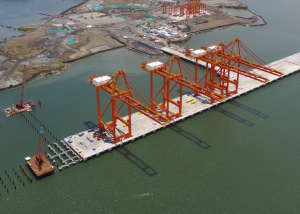Soil mixing is an in-situ technique of ground improvement that modifies the characteristics of a parent material by the addition of a binder, usually cement. Properties of this engineered material are between that of the parent material and that of a concrete.
The technique can be used for containing contaminants, water cut-off, ground improvement and supporting foundations.
HOW IT WORKS
The selected method is dependent on ground conditions and client requirements. Bachy Soletanche offer a range of different techniques, these include:
ColMix® (Column Mixing)
ColMix is a soil mixing technique delivered through one or more modified augers, fitted with mixing blades, mounted on piling rigs. The augers are drilled down through the soil to the required depth, where a binder is then injected as a slurry, onto the mixing blades at the tip of the auger. The auger is then rotated out of the bore at a defined speed, as the binder is continually injected and mixed with the soil to create a homogeneous material.
Spring Sol®
SpringSol® is based on the ColMix® method but used in restricted access working conditions. A drilling rig installs a casing to the top of the treatment zone. The mixing tool, in the closed position, is then inserted to the base of the casing, sufficient to allow the mixing blades to be opened. The open tool is then drilled to the base of the treatment zone, with the option to inject during this phase, on withdrawal or during both. This method allows a minimally invasive borehole size, whilst being able to form a much larger column beneath the surface.
Geomix® Walls (Cutter Soil Mixing)
This soil mixing process uses the in-situ soil as the construction material. The soil is de-structured as the rig-mounted mixing tool is drilled to the required depth. As the tool is withdrawn from the bore, cement grout is injected and mixed in-situ with the de-aggregated soils. The resulting modified soil constitutes the Geomix wall.
Trenchmix® Walls
This innovative process involves the in-situ mixing of the soil with a binding agent, using trencher machine. The cementitious soil-mixed material then self-hardens, forming a barrier approximately 400mm wide, with a greatly reduced permeability. Due to the in-situ mixing of soils, as opposed to total replacement, the requirement for handling and disposals of arising is significantly reduced.
Capability: Depending on the nature of the ground conditions and the technique employed, depths of up to 50m can be reached and column diameters of up to 3500mm can be achieved. Project specific grouts and binders can be designed, including undertaking in-house binder dosage trials, to determine the dosing rates.
Advantages: These techniques produce little or no spoil, thus considerably reducing the cost and carbon footprint of the work. Restricted access equipment allows this method to be used in areas where other solutions cannot be implemented. The processes are computer controlled, with full data capture and traceability.
